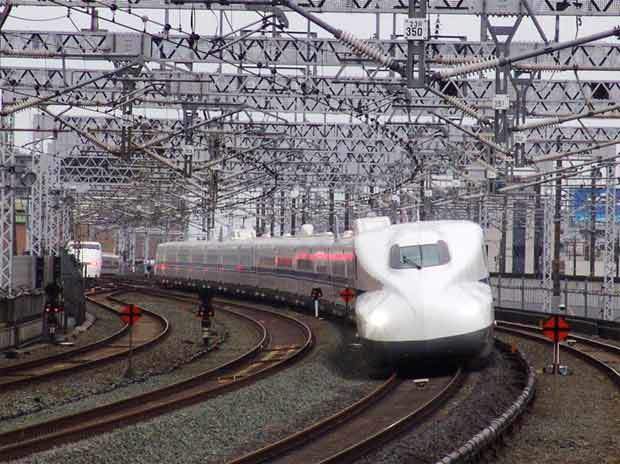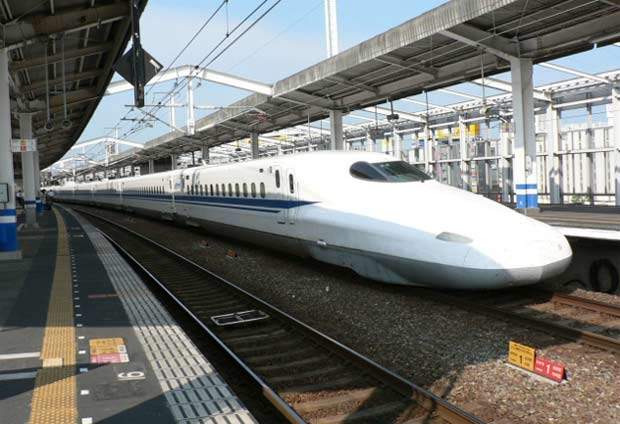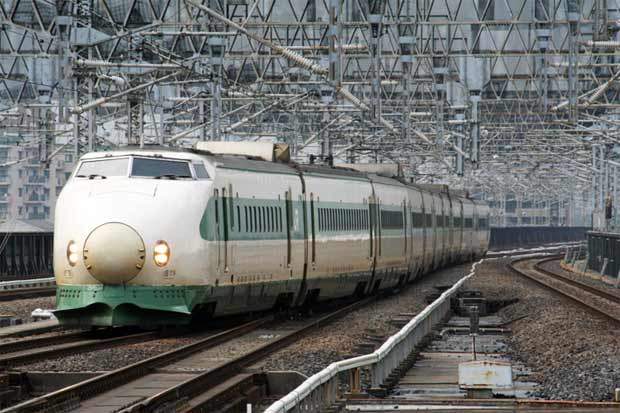Japan pioneered the use of high-speed railway lines by introducing Bullet Trains on the Tokaido Shinkansen line as early as 1964. Four decades later, the country has an exemplary network of standard gauge high-speed lines, and has introduced a new generation of trains N700 Shinkansen to accelerate services to the next level.
The new N700 Shinkansen is being used on the Tokaido Shinkansen – the world’s first and busiest high-speed line. The Series N700, based on the high potential of the Series 700 that was introduced in 1999, has significantly enhanced the speed, comfort and energy performance. It has increased the maximum speed from 270km/h (168.5mph) to 300km/h (186mph) and has reduced end-to-end journey times accordingly.
Around 300 high-speed trains currently operate every day, carrying over 130 million passengers.
The Project
The N700 project was launched in 2002 when the Komaki research centre opened. It combines the best practice from previous high-speed trains and the latest technology to deliver a highly sophisticated train. The first pre-production N700 series train was ordered in July 2003 by JR Central and completed for a public launch in March 2005.
The train has been designed with tilting mechanisms and advance aerodynamic features to increase its energy efficiency and maximum speeds whilst reducing journey times on the Tokaido Shinkansen. It took $2.1 billion and 5 years to develop this new series of trains.
The Series N700, jointly developed by JR Central and JR West, following completion of a full testing programme, entered commercial operation in 2007.
Infrastructure
The infrastructure of the Shinkansen routes already allowed for a maximum speed of 270km/h (168.5mph) following upgrading from a 210km/h (131 mph) route. However, the 2,500m curves spread along the route still had speed restrictions of 250km/h (156mph), which reflected the limit of the infrastructure.
In order to increase speeds still further, new technology was designed and built into the first pre-production N700 tilting train for the Tokaido Shinkansen. New tilting mechanisms allow the new trains to pass through 2,500m radius curves at 270km/h and run at a maximum speed of 300km/h on selected routes.
Rolling Stock
The 16 car N700 is the combination of experience in high-speed rail travel and the latest technology. Primarily based on the earlier 700 series trains, the greatest advance is in the body tilting system. It uses air springs in con-junction with a new form of Automatic Train Control (ATC) to allow trains to pass through 2,500m radius curves at 270km/h – 20km/h faster than permitted with conventional high-speed trains.
Acceleration has been improved too. The N700 benefits from a 30% increase in acceleration performance and now meets the acceleration standards of commuter trains – at 2.6km/h/s – reducing the amount of time needed to reach maximum speed to 180 seconds. In service the trains have been permitted to travel at a maximum speed of 270km/h on the Tokaido Shinkansen and 300km/h on the Sanyo Shinkansen.
Improvements in ride quality have also been achieved, firstly by installing a new high-performance semi-active suspension system, as well as continuing the use of non-linear air springs and dampers between cars. The amount of noise created by the N700 has also been reduced for both passengers and the surroundings.
To do this, the double skin structure has been enlarged and a new type of hood that covers the entire space between cars has been added to reduce external noise. Flooring materials too have been selected to suppress sound, together with low noise electrical and drive systems.
Outside, as well as the hoods between cars, the bogies have been covered by skirts and a new design of low noise pantograph has been fitted. The design of the N700 front has been specially considered to produce the most aerodynamic shape. Known as the ‘Aero Double Wing’ it has been developed using airplane technology for the first time in a railway application, for optimum aerodynamic performance at 300km/h.
Signalling and Communications
Signalling is largely fixed block, although with such high line speeds, sections are much longer than is standard elsewhere. A regular clock-face departure pattern for most services helps maintain a high level of reliability, but in the event of emergencies, train crews are in constant contact with their nearest control centre.
Information systems on newer variants of Shinkansen trains are proving far more reliable than previously, thanks to their use of much shorter cable lengths. The new N700 trains include additional ATC systems to operate the body tilting mechanism.
The Future
The N700 represents a significant development in high speed rail travel. Their reduced energy consumption, greater acceleration, improved aerodynamics and state-of-the-art body tilting mechanism make this the most advance rail product to be built in Japan.
The Series N700 was brought into operation in 2007. In 2008 just 17 N700 trains were operating on the Tokaido Shinkansen, but the number has increased to 81 by 2012.
Since its introduction in Japan, the N700 is gaining recognition worldwide as the fastest, safest, and most environment- friendly railway technology. For instance, U.S.-Japan High-Speed Rail (USJHSR) has already partnered with Japan Railway Central to market and deploy N700 train system and technology to international markets.





